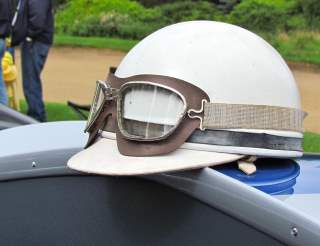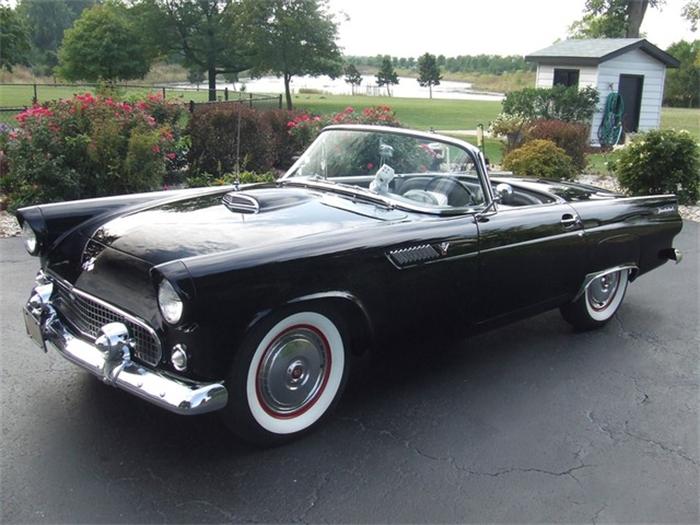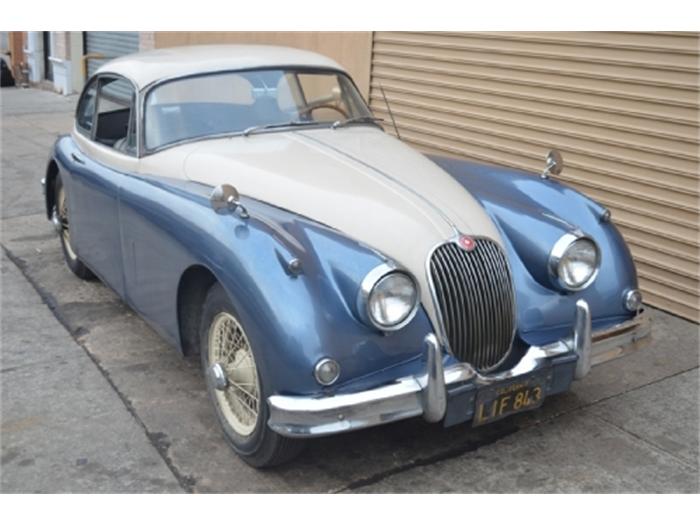 Whew! Summer really flew by, didn’t it. For me, summer meant being in the Midwest and attending several car shows and auctions. Now that I’m back in Phoenix, I’m unpacking my pickup truck and filing photos and programs. But first, I want to share a few words about some of the favorite vehicles I saw this summer and which I’m presenting in chronological order (it was hard enough culling through hundreds of classic cars; please don’t ask me to rank order these which caught my eye, and my fancy):
Whew! Summer really flew by, didn’t it. For me, summer meant being in the Midwest and attending several car shows and auctions. Now that I’m back in Phoenix, I’m unpacking my pickup truck and filing photos and programs. But first, I want to share a few words about some of the favorite vehicles I saw this summer and which I’m presenting in chronological order (it was hard enough culling through hundreds of classic cars; please don’t ask me to rank order these which caught my eye, and my fancy):
The Simca Special, a low, wedge-bodied concept car (see photo) that Virgil Exner Jr. (son of Chrysler’s superstar design director of the 1950s, Virgil Exner Sr.) built as his senior thesis while a student at the University of Notre Dame. Ex Jr.’s car was among those offered for sale at the Dane Mecum’s 25th annual Original Spring auction at the Indianapolis State Fairgrounds.
A 1958 Edsel Pacer convertible, which I also saw at Indy. O.K., so maybe you need to have a last name that sounds like Edsel to love such a vehicle, but I liked this one so much that I use a photograph of its push-button gear selector as my “cover photo” on Facebook.
The 1927 Ford roadster hot rod that Bob Kuttner of Clinton Township, Michigan, showed at the Cars ‘R’ Stars show at the old Packard Proving Grounds north of Detroit.
At that same show, the highly customized 1964 Buick Riviera displayed by Ron Dotten of Madison Heights, Michigan. You might not think of the Riv as being a candidate for such a tweak, but Dotten’s is both elegant and exciting.
The 1936 Stout Scarab that Ronald Schreidy of Milwaukee brought to the Motor Muster at the Henry Ford Museum’s Greenfield Village. Stout was an engineer who had helped develop the Ford Tri-Motor airplane and applied aerodynamic technology to his automotive designs. The Scarab was sort of an aerodynamic minivan with a slick monocoque chassis providing room for flexible seating arrangements with tables for dining or game playing.
Though not nearly as old as many of the entries, the pale blue 1956 Mercury convertible owned by Harry Edwards of Aurora, Colorado, provided a wonderful bit of nostalgia as it was parked in front of the historic State Theatre in downtown Traverse City, Michigan, awaiting the start of The Great Race.
I was 12 years old when Buick introduced its 1959 model lineup and I remember strongly disliking its cars with what The Standard Catalog of American Cars calls described as having their “blade fins sweeping from the front of the body rearward.” I much r the cat’s eye styling of the ’59 Chevy (and still do). Nonetheless, at the Concours d’Elegance of America this summer, I really liked the ’59 Buick LeSabre station wagon displayed by Joseph Carfagna of Mendham, New Jersey.
At that same event, the Mitchell Collection from Montgomery, Texas, showed its 1929 Stutz Model M Coupe with amazing Lancefield bodywork. The car was stunning and gorgeous, and yet in 1997 it was among those participating in the Beijing-Paris rally.
Since the Concours d’Elegance of America is the Motor City’s own big show, it has a special place for red-blooded American racing cars and this year the group of drag racing specials included the Green Monster 5. Now owned by Jon Rowley of Amado, Arizona, that car was built in 1955 by Art and Walt Arfons and remains powered by a World War II-vintage Allison V12 aircraft engine.
Is it a car or a bike or, well, it’s both. Also at the Concours d’America, Dennis Carlson of Bloomfield Hills, Michigan, showed his 1899 Orient, a four-wheeler that could be pedaled or powered by its small engine.
 I was so impressed with the cars on display at Auctions America by RM’s Labor Day sale in Auburn, Indiana, that I bought one. But it wasn’t made of metal but of wood (see photo). It’s a very stylish wooden model by famed automotive artist Tony Sikorski, whose work usually starts at $1,500 and often runs much, much higher. But Sikorski told me he also wanted models on his table that families with children could afford, so he makes those, too, and prices them at $100 or less, sometimes much less, in his effort to introduce youngsters to all aspects of the classic car hobby.
I was so impressed with the cars on display at Auctions America by RM’s Labor Day sale in Auburn, Indiana, that I bought one. But it wasn’t made of metal but of wood (see photo). It’s a very stylish wooden model by famed automotive artist Tony Sikorski, whose work usually starts at $1,500 and often runs much, much higher. But Sikorski told me he also wanted models on his table that families with children could afford, so he makes those, too, and prices them at $100 or less, sometimes much less, in his effort to introduce youngsters to all aspects of the classic car hobby.
I’m a sucker for Packards (I recently learned that my late father had owned two of them, one before and one after World War II), so it figures I fell hard for the 1952 Packard “Pacifica” concept car at the Auburn action.
I also loved the 1980 McLean SSR1 Speedster, which was built by Kerry McLean who wanted a roadster that would be fun but cheap to drive. His solution combined an aircraft-style fuselage and a 450-cc motorcycle engine. The result — a blast to drive while getting a reported 100 miles per gallon.
The vehicles were impressive but what I liked best about the Worldwide Auctioneers sale in Auburn, Indiana, was the venue, the old L29 Cord assembly building that now houses the National Auto & Truck Museum.
What car would I have wanted to drive out of that building? There were many great candidates, but I’d want the 1953 Woodill Wildfire Series II roadster, an early fiberglass sports car and competitor for the original Chevrolet Corvette and the Kaiser Darrin.
 I can’t help it. I have this thing for vintage pickup trucks and loved the 1930 Ford Model A pickup tow truck (see photo) that Richard Sylvia of Smiths Creek, Michigan, displayed at the annual Old Car Festival at Greenfield Village.
I can’t help it. I have this thing for vintage pickup trucks and loved the 1930 Ford Model A pickup tow truck (see photo) that Richard Sylvia of Smiths Creek, Michigan, displayed at the annual Old Car Festival at Greenfield Village.
Looking back at my photos, I also must include the bronze-orange hued 1930 LaSalle convertible coupe displayed by Robert Dowell of Chesterfield Township, Michigan.
I think I could have been very happy to drive away from Bob Lichty’s Classic Motorcar Auctions Grande Salon event at Canton, Ohio, in the black-and-blue 1938 Ford F-100 Model 81 quarter-ton pickup truck, though my buddy Jonathan Klinger from Hagerty Insurance and I kept saying how much fun it would be to have that big, old and barn-found 1951 Nash Ambassador Super sedan that didn’t sell for a high bid of $6,000.
The auction was held in conjunction with the annual Glenmoor Gathering of Significant Automobiles. I’m not sure how significant it might be, but the oh-so-tiny 1965 Peel Trident bubble car from the Lane Motor Museum in Nashville, Tennessee, might be fun to drive on a very cloudy and cool day.
There are few cars that might compete for attention with the famed 1935 Duesenberg Model SJ “Mormon Meteor” that Harry Yeaggy of Cincinnati brought to the show. One that caught my eye was the 1953 Packard Panther, a one-off created for Packard design director Edward Macauley. But my lust car at the Gathering was neither of them but the 1931 Alfa Romeo 6C 1750 Gran Sport Aprile Spider Corsa that got its Mario Revelli-designed bodywork in 1939 after the original Zagato coachwork was ruined in a crash. The gorgeous little roadster is owned by Corrado Lopresto of Milan, Italy.
My route from Michigan to Phoenix included Canton and then a visit to the Corvette Museum and Hall of Fame in Bowling Green, Ohio, where my favs were the 1968 Astro II and Astro-Vette concepts.
I also stopped at McPherson College in Kansas (the only school at which you can earn a four-year degree in classic car restoration) and at Carhenge in Nebraska, but will report to you on those stops at a later date.
For now, let’s get to the news:
Barrett-Jackson’s Vegas jackpot: $23 million
Barrett-Jackson’s fifth annual visit to Las Vegas produced a $23-million jackpot and set records for total sales and attendance. Particularly impressive as a 43-percent bump over last year at the event’s automobilia auction which accounted for $660,000 of the overall event total.
The top sale of the event was $330,000 for a 1967 Shelby GT500 SE Super Snake continuation fastback. A 1970 Plymouth Hemi Superbird brought $297,000, a 1967 Ford Mustang custom fastback when for $275,000 and a ’70 Mustang Boss 429 fastback brought $247,500.
Other top sales included $220,000 for a ’70 Shelby GT500 fastback, $155,000 for a 1956 Chevrolet 210 custom Foose roadster, $154,000 for a ’66 Shelby GT350 fastback, $148,500 for a ’67 Chevrolet Corvette custom convertible, $143,000 for a ’58 Vette custom cabrio and $130,900 for a ’59 Corvette convertible.
Barrett-Jackson also announced that it’s upcoming Scottsdale auction will include the 1955 Mercedes-Benz 300 SL owned by actor Clark Gable and one of 11 ’71 Plymouth Hemi ‘Cuda convertibles.
’33 Duesie dominates Dan Kruse event
The Dan Kruse Austin Hill Country Classic car auction, held for the first time in Austin, Texas, did $2.89 million in sales, but $1.65 million of that total came from the sale of one vehicle — the 1933 Duesenberg Model J “Queen of Diamonds” Franay Sports Berline Sedan formerly owned by the American socialite Countess Porceerei.
Among the other 150 vehicles, a 1968 Ford Shelby Mustang brought $156,600.
The move to Austin was a seeming success with the largest attendance in the event’s 38-year history.
Benz at Bonhams at Goodwood posts big numbers
The Bonhams auction at the Goodwood Revival in England produced $22.045-million in sales, led by $2.8 million paid for the “lost” 1928 Mercedes-Benz 26/120/180 S-type sports tourer that had been stored away in a garage for some six decades. At least six people were bidding on the Benz.
A 1929 Maserati Tipo 26M racer brought $2.72 million, a Lagonda V12 factory Le Mans racer from 1939 went for $1.9 million and a 1929 Alfa Romeo 1750 SS competition tourer brought $1.78 million.
Upcoming auction schedule
Next up on the auction schedule are:
Auctions America by RM, October 4-5 at Carlisle, Pennsylvania
Bonhams automotive preservation auction, October 8 at the Simeone museum in Philadelphia
RM at Hershey, Pennsylvania, October 11-12
The annual Branson Auction, October 12-13 in Missouri
The RM sale of the Charlie Thomas Collection, October 20 at the Gaylord Texan near Dallas.
It’s “Comedy and Cars” at the Petersen
John Lasseter, father of Pixar’s “Cars” movies and car-guy/comedian Adam Carolla will be feted October 4 at the “Comedy and Cars Gala” at the Petersen Automotive Museum in Los Angeles.
This event this year marks a new direction for the Petersen Automotive Museum Foundation’s fundraising. “In the past, we have honored automotive icons who have improved our lives through motorsports and industry innovation,” said museum board chairman Steve Young. “We felt it was time to recognize those who have used the gift of humor to promote the enjoyment of the automobile as a creative outlet, and the call to use it to explore the highways of America. ”
Lasseter, chief creative officer at Walt Disney, will receive the 2012 Automotive Visionary Award. Carolla will receive the 2012 Automotive Enthusiast Award.
For ticket information, visit www.petersen.org.
LeMay offers ‘Parental Daycare’ during concert
Speaking of car museums, LeMay — America’s Car Museum is doing something unusual October 9. Justin Bieber will be in concert across the street from the museum in Tacoma, Wash., so the LeMay is hosting a Parental Daycare” event from 5-10 p.m. for parents who want to drop off their children at the concert and then enjoy food and beverages and cars at the museum.
“Why should the kids have all the fun?” asked Scot Keller, chief marketing officer for the museum.





 Whew! Summer really flew by, didn’t it. For me, summer meant being in the Midwest and attending several car shows and auctions. Now that I’m back in Phoenix, I’m unpacking my pickup truck and filing photos and programs. But first, I want to share a few words about some of the favorite vehicles I saw this summer and which I’m presenting in chronological order (it was hard enough culling through hundreds of classic cars; please don’t ask me to rank order these which caught my eye, and my fancy):
Whew! Summer really flew by, didn’t it. For me, summer meant being in the Midwest and attending several car shows and auctions. Now that I’m back in Phoenix, I’m unpacking my pickup truck and filing photos and programs. But first, I want to share a few words about some of the favorite vehicles I saw this summer and which I’m presenting in chronological order (it was hard enough culling through hundreds of classic cars; please don’t ask me to rank order these which caught my eye, and my fancy): I was so impressed with the cars on display at Auctions America by RM’s Labor Day sale in Auburn, Indiana, that I bought one. But it wasn’t made of metal but of wood (see photo). It’s a very stylish wooden model by famed automotive artist Tony Sikorski, whose work usually starts at $1,500 and often runs much, much higher. But Sikorski told me he also wanted models on his table that families with children could afford, so he makes those, too, and prices them at $100 or less, sometimes much less, in his effort to introduce youngsters to all aspects of the classic car hobby.
I was so impressed with the cars on display at Auctions America by RM’s Labor Day sale in Auburn, Indiana, that I bought one. But it wasn’t made of metal but of wood (see photo). It’s a very stylish wooden model by famed automotive artist Tony Sikorski, whose work usually starts at $1,500 and often runs much, much higher. But Sikorski told me he also wanted models on his table that families with children could afford, so he makes those, too, and prices them at $100 or less, sometimes much less, in his effort to introduce youngsters to all aspects of the classic car hobby. I can’t help it. I have this thing for vintage pickup trucks and loved the 1930 Ford Model A pickup tow truck (see photo) that Richard Sylvia of Smiths Creek, Michigan, displayed at the annual Old Car Festival at Greenfield Village.
I can’t help it. I have this thing for vintage pickup trucks and loved the 1930 Ford Model A pickup tow truck (see photo) that Richard Sylvia of Smiths Creek, Michigan, displayed at the annual Old Car Festival at Greenfield Village.


